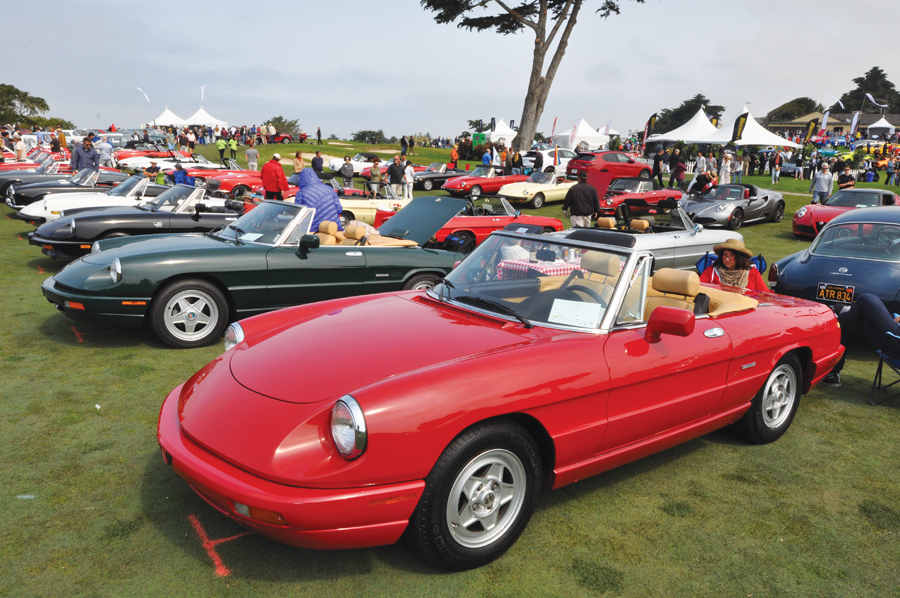The affordable European sports-car pantheon usually comes down to just four cars: the MGB, the Triumph Spitfire, the Fiat 124 Sport Spider, and the Alfa Romeo Spider.
I can already hear the seismic rumble of readers jumping up to mention the MG/Austin-Healey Spridget, Triumph TR-series, Opel GT, Sunbeam Alpine, Volvo P1800 and, God help us, the Jensen-Healey. Truly, there’s a case to be made for each of those and others besides, but if you ask any enthusiast, it’s almost certain that they’ve owned at least one of those top four models. Those who own a Fiat 124 Spider may search for
FIAT 124 Spider brake parts for sale to replace old parts.
These cars were (and remain) the most popular because they were available in large numbers, offered decent performance for the money — and they were relatively cheap to buy and repair.
The Alfa Spider was special
Yet one of the big four is unlike the other three. The Alfa Romeo Spider stands out because, in its day, it was dramatically more expensive than the other three, and it outlasted all of them by almost a decade. The Spitfire and MGB petered out in 1980, while the Fiat soldiered on under the Pininfarina badge until 1985.
In contrast, Alfa kept two generations of its venerable Spider going until 1994 — and actually improved the car along the way.
No Spica, German
Since 1971, the Alfa Spider had used its Spica mechanical fuel-injection system to stay a step ahead of the EPA — at least in 49 states.
It was a good system (fight me!) even if it offered too many tempting adjustments to untrained hands. But by 1982, advancing emissions standards outpaced its abilities, and Alfa switched to Bosch L-Jetronic injection for the last year of the second-generation Spider. The L-Jet system carried over to the third generation in 1983, and that’s where this story really begins.
The third generation of the Alfa Spider was a continuation of the second generation, with just a few updates to conform to the styles of the period. Since the DOT bumpers weren’t going away, Alfa smoothed them into the bodywork a bit better, stylized its traditional grille and put a little lip spoiler on the back end.
The 2.0-liter engine gained back a bit of power, rising from 111 bhp with the last Spica system to 115 bhp with the Bosch.
Here’s to you, movie tie-in model
The standard Alfa Spider of the 1980s was officially called a Spider Veloce, though that designation had long since lost any signification of extra performance.
Prices had been rising, and by 1984 the retail price of a Spider had risen to $16,000 — almost $6,000 more than the popular Mazda RX-7 — but still less than a Nissan 300ZX. Buyers could even snag a convertible Ford Mustang GT and leave almost $2,500 in their wallets.
So for 1985, Alfa brought out the Spider Graduate, riffing on the eponymous movie. The Graduate was a stripped-down Spider with steel wheels, vinyl seats and top, and a few other subtractions to reach a purchase price of $13,500. Nothing substantive was taken away, however, and buyers still got the 115-bhp engine and 5-speed manual transmission.
In 1986, Alfa went the other direction and added a luxury Quadrifoglio trim, priced at $20,500. The Spider Quad offered sporty leather seats, standard a/c, and an AM/FM/cassette stereo. The full purchase price included $900 for a Pininfarina-designed hard top, which could be refused. Both the Graduate and the Quadrifoglio continued in production through the end of the third generation in 1990.
End of an era
By the 1991 model year, Mazda had rocked the sports-car world with the new Miata. The cute Japanese roadster was arguably better than any British or Italian low-cost option had ever been — and it was priced well below the Spider.
Alfa leadership in Milan responded the only way they could: by taking the Spider upscale. Thus, the final-generation redesign focused on a comfortable interior and attractive exterior presentation. The Graduate became simply the Spider, leaving the leather, alloys and air conditioning for the Spider Veloce.
Alfa also switched to Motronic fuel injection and electronic ignition, which raised engine output to 120 horsepower. For the first time, buyers could also get their Alfa Spider with an automatic transmission and variable-assist power steering.
The Alfa Spider carried on until 1993, when declining sales spelled finito for the Giulia-based model that had been produced in one form or another since 1966. Alfa sold only 565 cars in America in 1994, including 190 special commemorative-edition Spiders.
What’s the big deal?
From the second to the fourth generations, Alfa sold somewhat over 40,000 Spiders in America, and about half of those were third-generation or fourth-generation cars. Prices are generally under $10,000 for a good driver-quality example — unless you stumble across one of those commemorative editions.
Alfisti will usually tell you that none of the injected cars have the panache of the earlier carbureted models, and that’s generally true.
Spiders are also subject to rust. The lore goes that Alfa was buying steel of dubious quality from the Soviet bloc by the mid-1970s, but really, it’s no worse than any other vehicle of the period. Finally, Alfas can be persnickety, especially if left to sit for long periods.
But the snarl of an Alfa twin-cam engine is musical, and if you follow the basic rules of Italian driving (Guidalo come se fosse rubato!*) there are few old sports cars as affordably soul-satisfying as an Alfa Spider.
*Drive it like you stole it. ♦

